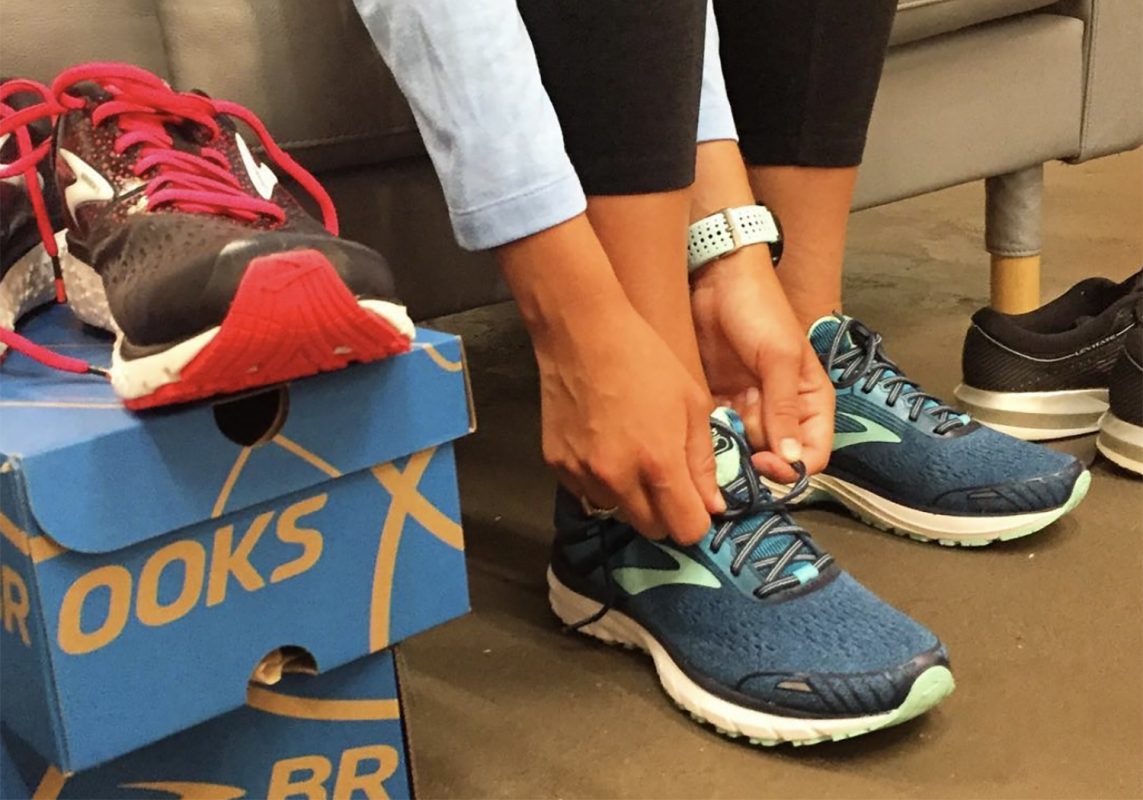
The process of shopping for shoes can be difficult and overwhelming. Every day, more options are added to store walls and webpages, with new differentiators and trends to decipher. While it doesn’t have to be confusing or intimidating, it is important to understand how to find the right shoes for you.
From the moment you get out of bed, your feet balance the entire weight of your body. They absorb impact, provide joint stability, and keep you upright. While the biomechanics of each person are different, there are typically 26 bones, 33 joints, and more than 100 tendons and ligaments in your feet. Many animals have paw pads for cushion and support, but human feet are delicate. No matter what pace or distance we’re going, they are constantly absorbing force that echoes throughout the rest of our bodies. What’s more? Localized forces may be as high as 13 times your body weight while running, according to the Mayo Clinic.
Across the board, experts agree—the two most important things to look for in a shoe are support and fit. “Worst-case scenario, improper footwear can contribute to injury,” says Thomas Neuberger, editor and founder of online running resource Believe in the Run. Neuberger and his team have reviewed countless shoes, and report that the questions they get most often are injury recovery and prevention-related. With ill-fitting shoes, you could end up with anything from lost toenails or shin splints to stress fractures or tendonitis.
In addition, when you have properly fitting shoes, you increase your comfort, making the entire experience more enjoyable. “Running can transform people’s lives, and the right gear makes it even better,” continues Neuberger. “I often compare it to wine. I can’t tell the difference between high-end and good boxed wine, but when a chef and sommelier pair food with wine that compliments and opens the flavors of a dish, I understand how and why the wine choices are important to the experience.”
There are plenty of local experts who can help you find a pair that will suit your needs and complement your running experience. “Each persons’ fit and foot mechanics are incredibly individual,” says Lizzy Peper, senior marketing manager and run coach with Charm City Run.
Most local running stores offer free and easy fit tests that help you through the process. When going in for a test, bring the shoes you’re currently using and share what works and doesn’t work. An expert will discuss your needs and goals, ask about current or recent injuries, and review your gait and pronation.
While it seems intuitive to get the same size as your casual shoes, Peper says that most runners should try at least a full size higher. Common discomfort and injuries are often simply a result of having the wrong size shoe.
“I typically buy my shoes 1.5 sizes bigger than what I normally wear to accommodate for swelling,” says Alison Staples, co-leader and run coach with local running group RIOT Squad. She admits that, early on, she had no idea what was out there. “I picked my first half marathon shoe based on style and color, wore them fresh out the box the day of the race, and lets just say things did not end well. There are a ton of shoes on the market, and unfortunately we tend to look at what others are wearing as opposed to what works best for our own body.” Now, Staples uses her own experience to help students find shoes that work for them.
Once you narrow the selection by support and size, the goal is to find a shoe that feels most natural. There have been dramatic changes in the shoe category throughout the past five years. “You will see a lot of innovations in foams and cushioning,” says Neuberger. “Brands are focusing on solutions to increase efficiency and energy return.”
Most stores allow you to wear test the shoes around the store, on a treadmill, or even for a few days at home. If you’re interested in a deeper dive, the Charm City Run team can also film your run and analyze your foot-strike frame by frame.
A good rule of thumb is to replace your shoes every 300-500 miles. At this point, the cushion and support typically break down, causing less comfort or more injuries. Tread is often an indicator, but with today’s innovations, it’s not always reliable. Peper says that a better measure is how flexible the shoe has become over your mileage. When purchasing quality, well-fitting shoes, expect to pay somewhere in the range of $100-160.
And before you dismiss the idea, thinking this advice is only targeted at ‘real runners’, think again. If you run, you’re a runner. If you walk, you’re a walker. There is no distance or speed to qualify. Everyone can benefit from well-fitting, supportive shoes.
